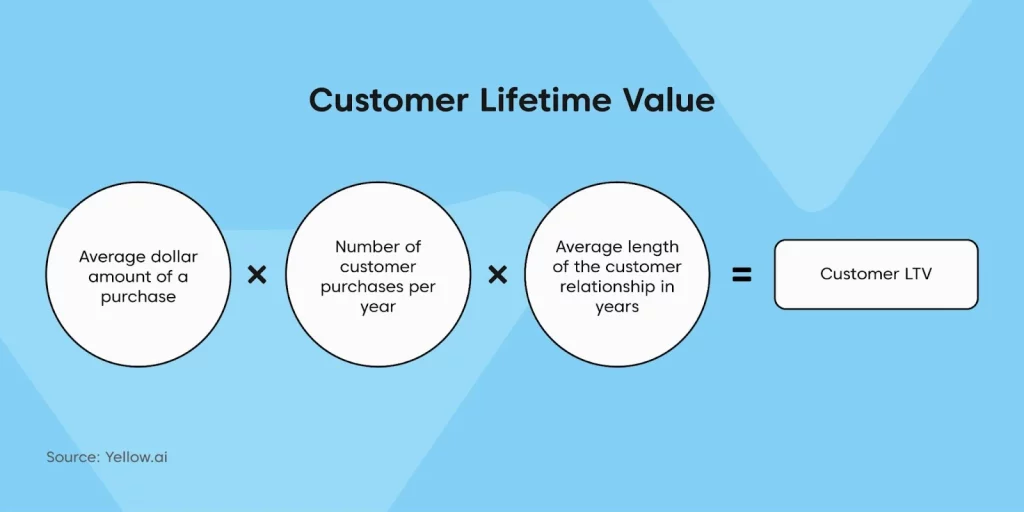Executive summary
Understanding and improving customer satisfaction is more than a metric—it’s a vital strategy for business success and sustainability. This comprehensive guide attempts to decipher the significance of customer satisfaction and discuss its fundamental role in business growth and branding. Focusing on practical and innovative approaches, it explores key methods to enhance customer satisfaction scores, such as multi-channel support, consistent feedback collection, and leveraging tools like contact center automation. This blog also provides actionable tips to boost customer satisfaction in various aspects.
We are set to enter 2024, and businesses must gear up to face a landscape where customer satisfaction is the linchpin of success. Customers can make or break brands in a world teeming with choices and voices. This shift has made understanding and improving customer satisfaction essential and imperative for businesses aiming to thrive. Gone are the days when customer satisfaction was a secondary thought—today, it’s the heartbeat of business strategy.
You know how businesses are always talking about keeping their customers happy? There’s actually a lot of sense behind it. Apparently, around 70% of what customers decide to buy is influenced by how they feel a company treats them. But what really ticks the boxes for customers? And how can businesses really hit the mark in making customers happy? This blog will answer these questions, armed with some interesting stats and stories from the real world. It will also shed some light on the key ingredients for customer satisfaction and how businesses can up their game.
What is customer satisfaction?
Customer satisfaction has evolved into a critical barometer to measure success. It’s a concept extending beyond mere transactions. It is customers’ emotional response to their experiences with a product, service, or brand. For businesses, it’s about meeting and exceeding customers’ expectations, creating memorable experiences, and fostering positive emotional connections.
This pivotal element is a comprehensive measure reflecting every interaction a customer has with a brand. Every touchpoint contributes to the customer’s perception and satisfaction, from the initial contact and purchase process to post-sale support and long-term engagement. In this era, where digital platforms and social media amplify voices, a satisfied customer can be a brand’s most prominent advocate, while a dissatisfied one can be a formidable challenge.
The business world has changed a lot, especially when it comes to customer satisfaction. It’s no longer just about having a good product. Companies need to create an experience, something that feels personal and special. They’re leaning more and more on data to understand what customers want and how they act. They use stuff like NPS (Net Promoter Score), CSAT (Customer Satisfaction Score), and CES (Customer Effort Score) to measure how happy customers are and where they can do better. The ultimate goal? Crafting an experience that’s so good, it keeps customers loyal and brings in new ones through glowing recommendations. Today, making customers happy isn’t just a nice thing to do; it’s woven into the very identity and strategy of a brand.
How improving customer satisfaction is significant for your business
Making your customers happy is a must-do for your business. In a world where every company is trying to stand out, happy customers are your ace in the hole. But why is it so crucial to put customer satisfaction at the forefront of your business strategy? Let’s take a closer look at why it’s so important and how it can really make a difference in your business’s growth and success.
1. Reduce customer churn
The first and most immediate impact of heightened customer satisfaction is a marked reduction in customer churn. When customers feel heard and valued, their inclination to switch to competitors diminishes significantly. It is imperative in an era where options are plentiful, and switching barriers are low. Practical solutions, such as offering proactive self-service options or real-time engagement tools, can boost customer satisfaction and loyalty. The result is a stable, loyal customer base that forms the backbone of your business’s revenue stream.
Moreover, the cost implications are profound. It’s widely acknowledged that retaining an existing customer is far more cost-effective than acquiring a new one. By reducing churn, you’re not just maintaining revenue; you’re saving on the substantial costs associated with customer acquisition. Thus, reducing churn through customer satisfaction is a smart financial strategy, safeguarding your business against the costly cycle of losing and acquiring customers.
2. Increase customer lifetime value (CLTV)

A satisfied customer is a repeat and a profitable one. They are more likely to make repeat purchases, try new offerings, and stick with your brand. Improving customer satisfaction directly correlates with an increase in customer lifetime value (CLTV). By delivering consistently positive experiences and measuring feedback across all touchpoints, you can significantly enhance CLTV.
The relationship between customer satisfaction and CLTV is cyclical. As you invest in improving customer experiences, you retain customers longer and enhance their value to your business. They become more open to upselling and cross-selling opportunities, contributing more to your revenue over time. In this way, improving customer satisfaction becomes an investment in the future profitability of your business.
3. Improve branding
Customer satisfaction has a ripple effect beyond immediate transactions—it shapes your brand’s image. Today, most people trust recommendations from friends and family more than any other form of advertising. Thus, satisfied customers become powerful brand advocates. They share their positive experiences through word-of-mouth, both offline and online, effectively amplifying your brand’s reach and reputation.
This organic promotion is invaluable. Positive customer stories and testimonials resonate more authentically than traditional advertising, building trust and credibility for your brand. A brand known for high customer satisfaction enjoys a strong reputation, making it more attractive to potential customers and employees. Improving customer satisfaction is an investment in building a robust and respected brand.
4. Boost customer loyalty
Finally, the impact of customer satisfaction on loyalty cannot be overstated. Statistics show that repeat customers spend 67% more than new customers. This loyalty is not just beneficial in terms of direct revenue; loyal customers also provide stability and predictability to your business.
Loyal customers offer invaluable insights and feedback, helping you refine your offerings and stay ahead of market trends. They are less price-sensitive and more forgiving of minor mistakes, providing a cushion for your business in challenging times. Customer satisfaction and loyalty are intertwined, reinforcing the other and creating a virtuous business growth and stability cycle.
8 tips to improve customer satisfaction in 2024
Customer expectations are at an all-time high today, and businesses need innovative and effective strategies to enhance customer satisfaction. Here are 8 transformative tips essential for any business looking to improve their customer satisfaction in the modern market.
1. Offer multi-channel support
Customers today engage with brands across various platforms. Offering multi-channel support is crucial to meet customers where they are. It means being present on live chat, social media, email, and phone support channels. The key to success goes beyond just presence; you must ensure quality and consistency across channels.
Integrating multi-channel support allows you to cater to customer preferences, enhancing their experience with your brand. Each channel should offer a seamless and efficient service, reflecting your brand’s commitment to customer care. This approach not only elevates customer satisfaction but also reinforces your brand’s credibility and accessibility.
Example: Implement a unified customer service platform that integrates live chat, email, phone, and social media support, ensuring customers receive consistent and efficient service across all channels.
2. Make collecting feedback a company process
Customer feedback is the compass guiding a business toward improved customer satisfaction. Make collecting and analyzing feedback an integral part of your company’s process. It involves setting up mechanisms to gather insights across different touchpoints and ensuring this data is accessible to relevant teams.
Regularly collecting feedback helps you stay attuned to customer needs and expectations. It allows you to make informed decisions and adapt your strategies to continually enhance customer experiences. Remember, a customer-centric approach, where feedback is valued and acted upon, is vital to fostering a culture of continuous improvement and customer satisfaction.
Example: Set up automated email surveys post-purchase and encourage feedback through interactive pop-ups on your website.
3. Measure customer satisfaction regularly
Measuring customer satisfaction gives you tangible metrics to understand how well you meet customer expectations. Regularly use tools like NPS, CSAT, and CES to gauge customer sentiments.
- NPS (Net Promoter Score): Measures the likelihood of customers recommending your brand. It categorizes customers into Promoters, Passives, and Detractors based on their likelihood to recommend your service.
- CSAT (Customer Satisfaction Score): Evaluates immediate satisfaction with your product or service, usually through a simple question like “How satisfied were you with your experience?”
- CES (Customer Effort Score): Assesses the ease of interaction with your company, focusing on how much effort was required from the customer’s side.
These metrics provide invaluable insights, enabling you to identify areas of success and those needing improvement. Regularly measuring customer satisfaction ensures that your strategies are data-driven and aligned with customer preferences, significantly enhancing the overall customer experience.
Example: After resolving a customer support ticket, send a quick CSAT survey to rate their satisfaction with the resolution process.
4. Ask for feedback across all touchpoints
Gathering feedback shouldn’t be limited to post-purchase surveys; it should encompass the entire customer journey. Implement feedback mechanisms at various touchpoints, from website navigation to post-service follow-up. This approach ensures you capture the full spectrum of customer experiences, providing a comprehensive understanding of their journey.
Utilizing different channels for feedback, such as in-product surveys, email, and social media, also allows you to engage customers in their preferred format. It also demonstrates your commitment to listening to your customers at every step of their interaction with your brand.
Example: Use in-app surveys for product feedback, email surveys for post-purchase reviews, and on-call feedback queries for service evaluation.
5. Actively ask customers for feedback
Proactively seek feedback from your customers. Don’t wait for them to come to you with complaints or praise. Engage them at different stages of their interaction with your brand, be it post-purchase, during onboarding, or after customer support interactions.
Active solicitation of feedback shows customers that their opinions matter to you. It opens channels for communication, builds trust, and can convert indifferent customers into engaged ones. This proactive approach is essential for understanding customer needs and enhancing their satisfaction with your brand.
Example: Send follow-up emails or SMS messages asking customers about their buying experience and suggestions for improvement.
6. Share feedback across all your teams
Feedback should not be siloed within customer service departments. Share it across all teams – from product development to marketing. It ensures that every department understands customer perspectives and can align their efforts toward enhancing customer satisfaction.
Encourage a culture where feedback leads to action. For instance, if customers are repeatedly highlighting an issue with a product feature, the product team needs to address it. Involving all teams in the feedback loop assures a holistic approach to improving customer satisfaction.
Example: Create a shared dashboard where all teams can access and act upon customer feedback, ensuring a cohesive response to customer needs.
7. Reply to all feedback
Every piece of feedback, positive or negative, deserves acknowledgment. Responding to feedback shows customers that you value their input. For positive feedback, express gratitude and encourage continued engagement. For negative feedback, offer a sincere apology and a commitment to resolve the issue.
The way you handle feedback can significantly impact customer perceptions. Timely and empathetic responses can turn a negative experience into a positive one, reinforcing customer loyalty and trust in your brand.
Example: Set up an automated response system for immediate acknowledgment of feedback, followed by personalized follow-up communications.
8. Act on complaints and negative reviews
Negative feedback is an opportunity for improvement. Address complaints promptly and efficiently. Ensure that your customers feel heard and their concerns are being taken seriously. Keep them updated on the steps you’re taking to resolve their issues.
Acting on negative feedback helps in retaining dissatisfied customers and demonstrates to others that you’re committed to providing excellent service. Remember, a well-handled complaint can often lead to a more loyal customer than if the issue had never occurred.
Example: Address negative reviews on social media and follow up with customers to inform them about the steps taken to resolve their issues.
By implementing these strategies and examples, businesses can significantly enhance their customer satisfaction levels, fostering a loyal customer base and driving long-term success.
How to boost customer satisfaction with Yellow.ai
Yellow.ai emerges as a powerful ally for businesses seeking to boost customer satisfaction. Integrating Yellow.ai’s advanced solutions can transform your customer engagement strategy, aligning it with the modern demands of customer service. Here’s how Yellow.ai can be a game-changer for you to ace it:
1. Seamless multi-channel support
Yellow.ai enables businesses to offer comprehensive multi-channel support. Take our omnichannel AI automation, for example. This approach integrates various communication platforms like live chat, social media, email, and voice support into one cohesive system. This approach ensures that customers receive consistent, high-quality service regardless of their preferred channel. The seamless integration of these channels by Yellow.ai enhances the customer experience and streamlines your communication processes.
2. Efficient feedback collection mechanism
With Yellow.ai, collecting and managing customer feedback becomes effortless and more structured. Our platform’s sophisticated AI algorithms can automate feedback requests across different stages of the customer journey, ensuring a steady flow of valuable insights. You can explore our Dynamic Automation Platform to extract precise data and insights. This automation aids in capturing the voice of the customer accurately and efficiently, providing businesses like yours with real data to drive their customer satisfaction strategies.
3. Advanced analytics for measuring satisfaction
Yellow.ai’s robust analytics capabilities enable you to measure customer satisfaction effectively. By utilizing metrics like NPS, CSAT, and CES, Yellow.ai provides in-depth analysis and actionable insights. These insights allow your businesses to understand real-time performance and make data-driven decisions to enhance customer satisfaction.
4. Proactive engagement and personalized experiences
Utilizing AI-powered chatbots and virtual assistants, Yellow.ai proactively engages customers, offering personalized experiences based on their previous interactions and preferences. This level of personalization boosts customer satisfaction and fosters a sense of loyalty and connection with your brand. You can employ our AI voice agents, equipped with over 135 global languages, to interact with your customers.
5. Real-time responses and feedback implementation
Yellow.ai’s platform ensures that all customer feedback is promptly acknowledged and responded to. Whether through automated responses or directing issues to the right team, the platform guarantees no customer feedback goes unnoticed. This responsiveness is crucial in turning customer feedback into meaningful actions and improvements.
6. Complaints and negative reviews management
Managing complaints and negative reviews becomes more manageable with Yellow.ai. The platform’s advanced sentiment analysis tools identify and address customer grievances quickly, turning potentially negative experiences into opportunities for demonstrating excellent customer service and commitment.
Incorporating Yellow.ai into your business model equips you with the tools and technology to improve customer satisfaction. Its combination of AI-driven interaction, in-depth analytics, and efficient feedback management makes Yellow.ai a tool and a strategic partner in your journey toward achieving exceptional customer satisfaction.
Final thoughts: Elevating customer connections
The heart of business success lies in how well a company connects with its customers. From embracing multi-channel support to actively engaging with customer feedback, the strategies discussed here are tactics and pathways to forge resilient and more meaningful relationships with customers. The goal is simple yet profound: create customer experiences that resonate, delight, and endure. In doing so, your businesses don’t just chase satisfaction scores; they cultivate a culture of loyalty, trust, and mutual growth. It is the new era of customer engagement—a space where every interaction becomes a stepping stone to profound customer relationships.
Customer satisfaction – Frequently asked questions (FAQs)
What is good customer satisfaction?
Good customer satisfaction is achieved when a business successfully meets or exceeds the expectations of its customers. It involves creating positive experiences at every interaction, making customers feel valued and heard. Good customer satisfaction is reflected in high loyalty rates, repeat business, positive reviews, and customers advocating for the brand.
What are the 3 C’s of customer satisfaction?
The 3 Cs of customer satisfaction are consistency, convenience, and communication. Consistency ensures reliable and predictable service. Convenience makes interactions effortless for the customer. Communication involves clear, timely, and empathetic engagement with customers.
What are the 5 basic levels of customer satisfaction?
The 5 basic levels of customer satisfaction are:
- Basic service: Meeting the fundamental needs of the customer.
- Satisfactory service: Providing adequate service that meets general expectations.
- Surprising service: Exceeding expectations with unexpected positive experiences.
- Delightful service: Creating memorable, joyous experiences for customers.
- Exceptional service: Offering unparalleled service that sets a business apart in the industry.
What are some ways to improve customer satisfaction?
Some ways to improve customer satisfaction include offering multi-channel support, regularly collecting and acting on customer feedback, personalizing customer experiences, ensuring timely and effective resolution of issues, and continually assessing and improving service quality based on customer insights.
How do you solve customer satisfaction problems?
To solve customer satisfaction problems, identify the root causes of dissatisfaction through feedback and analytics. Address these issues promptly with practical solutions, communicate openly with customers about the steps taken to resolve their problems, and make systemic changes to prevent future issues. Continuously monitor satisfaction levels to ensure ongoing improvement.






























